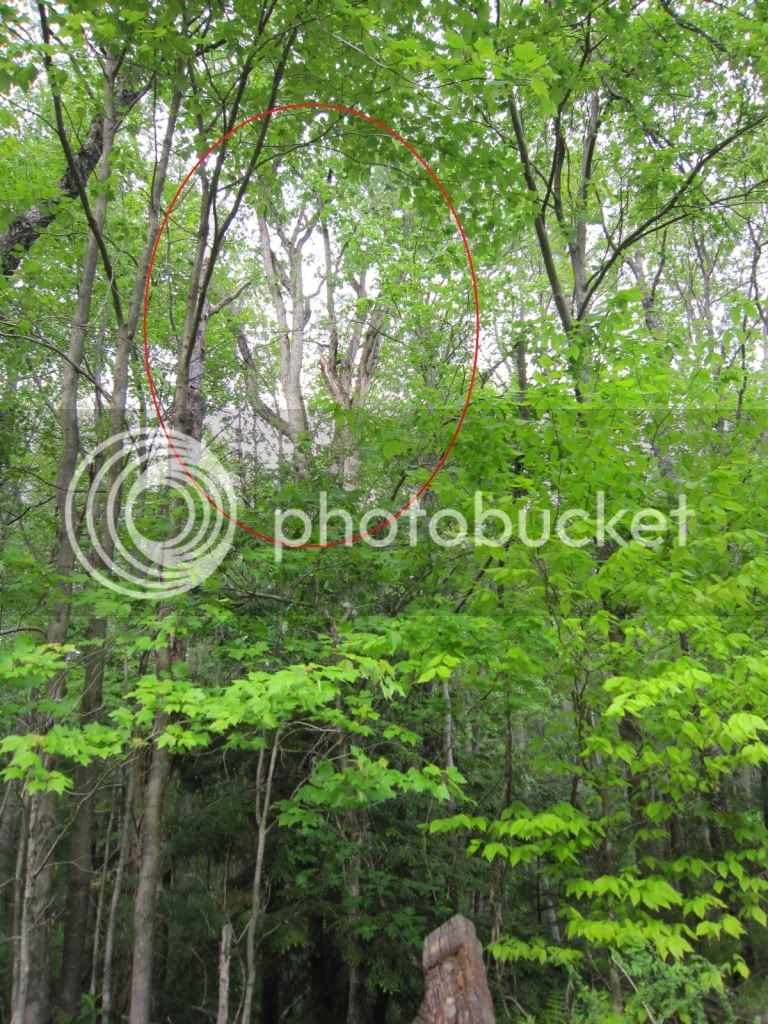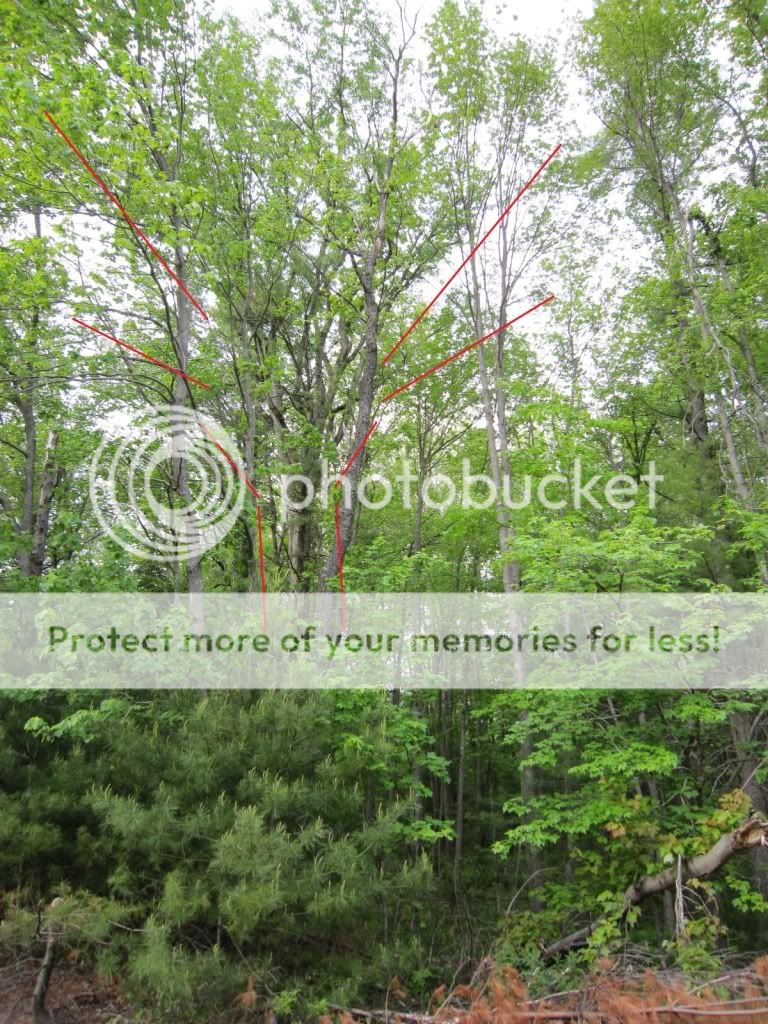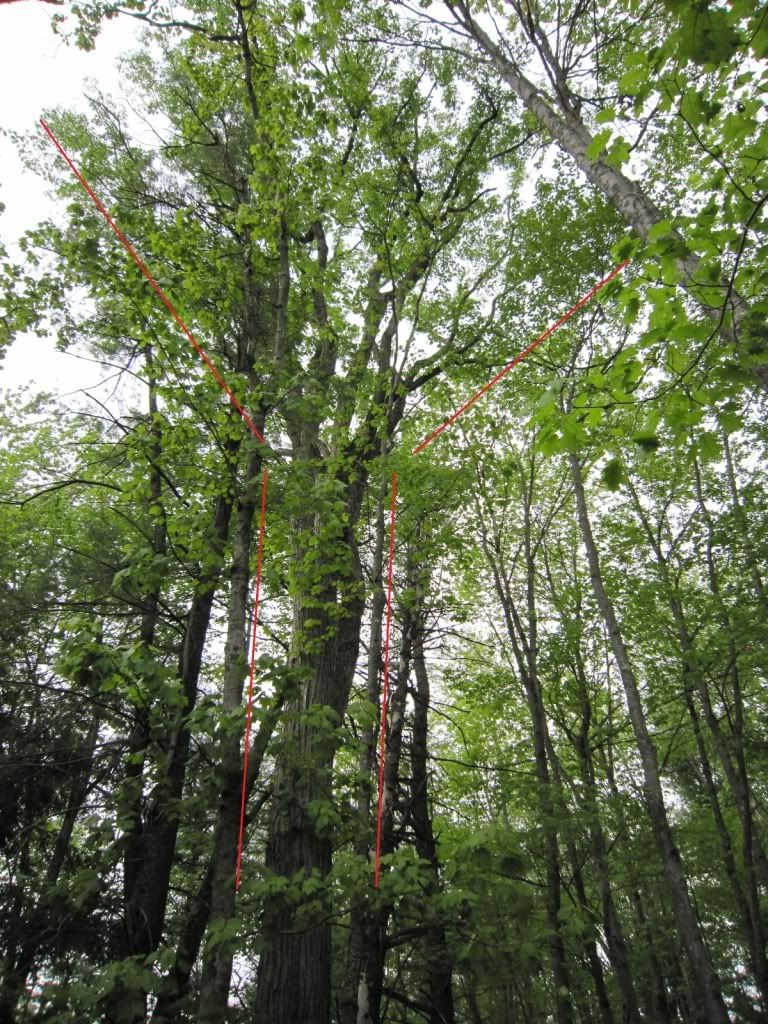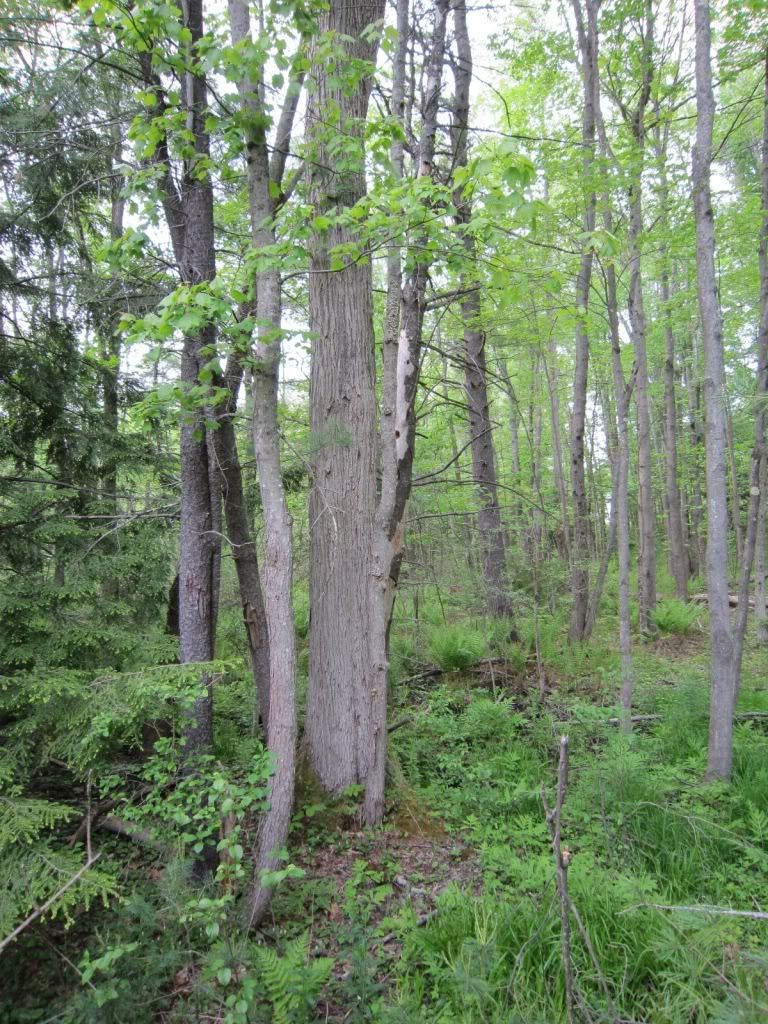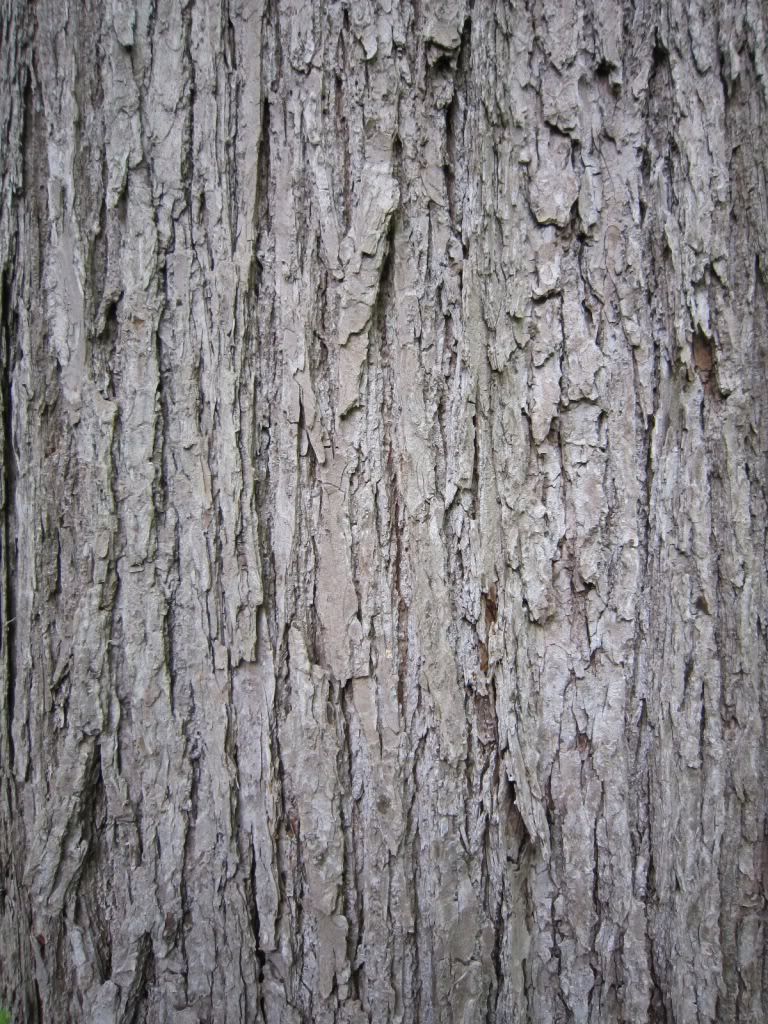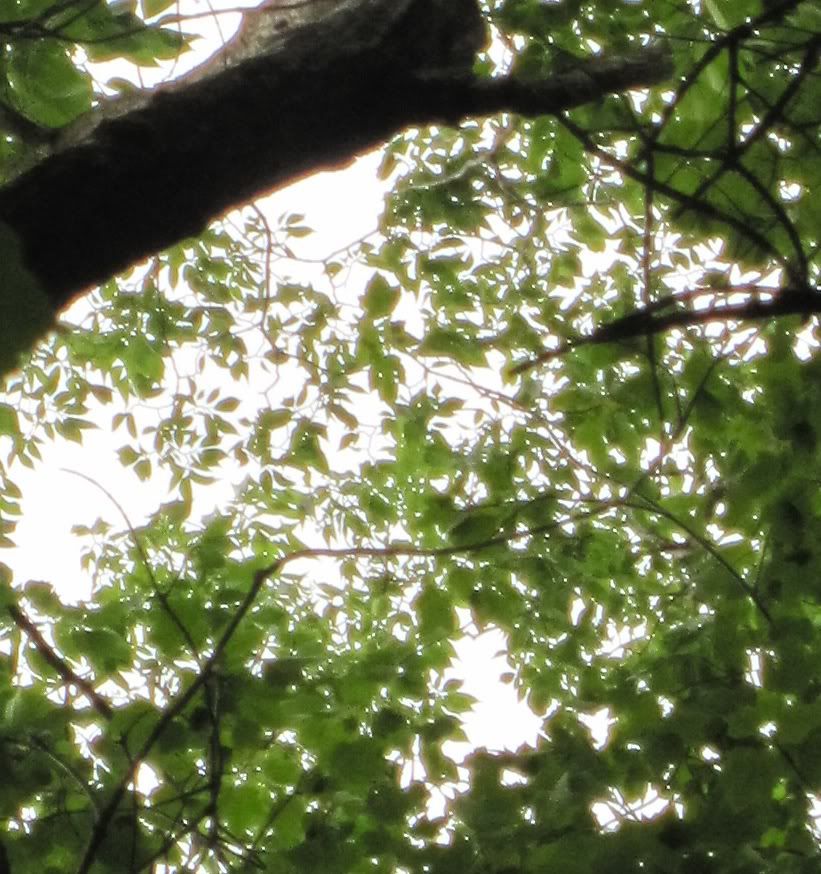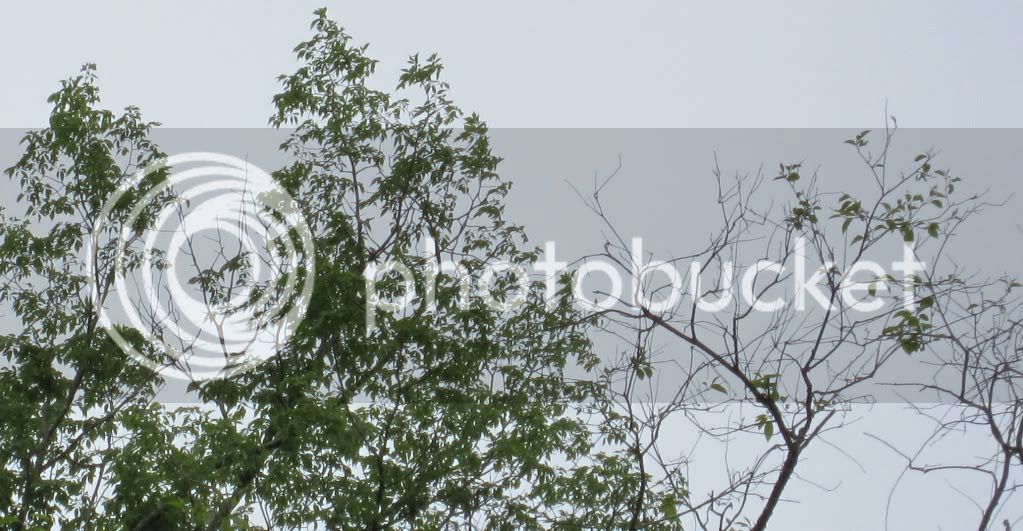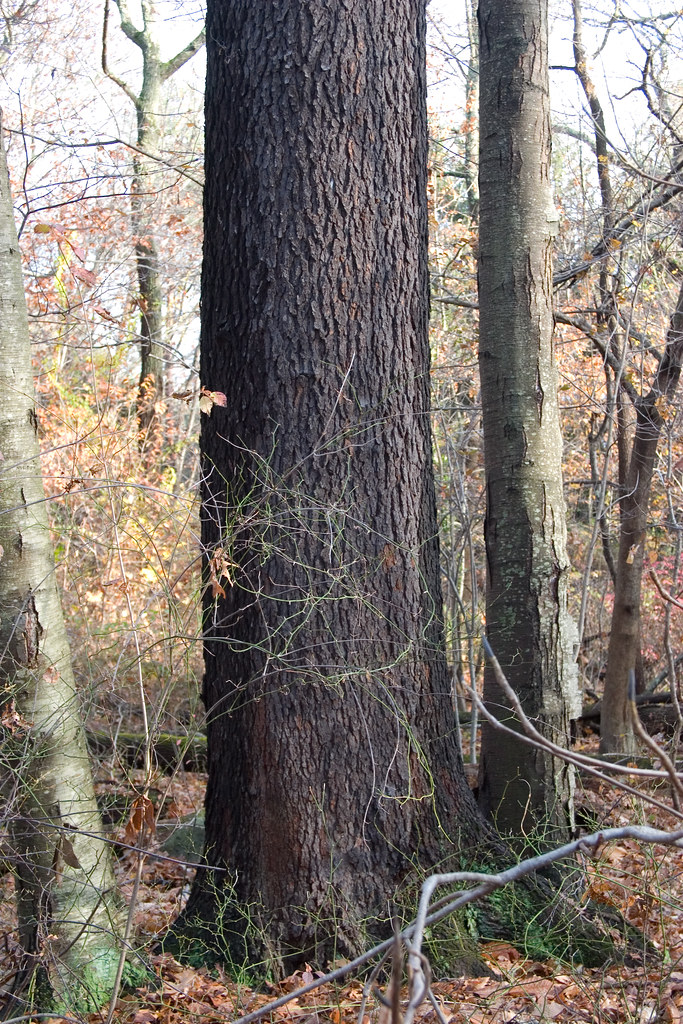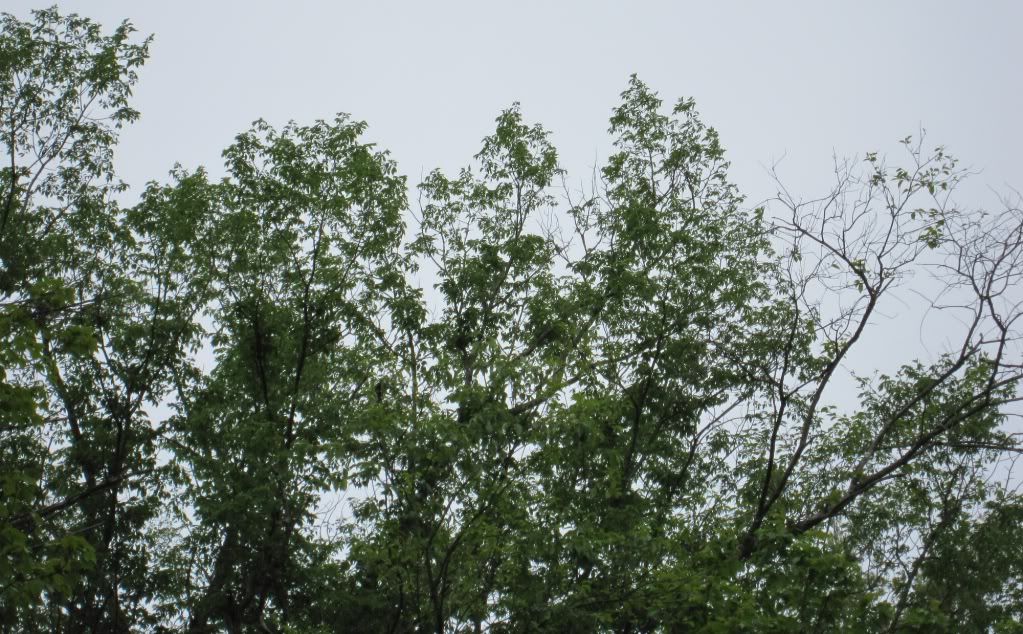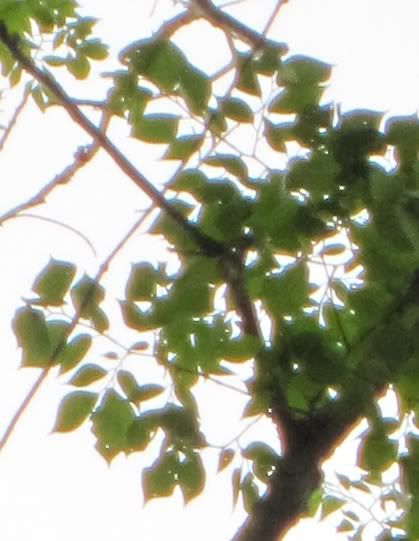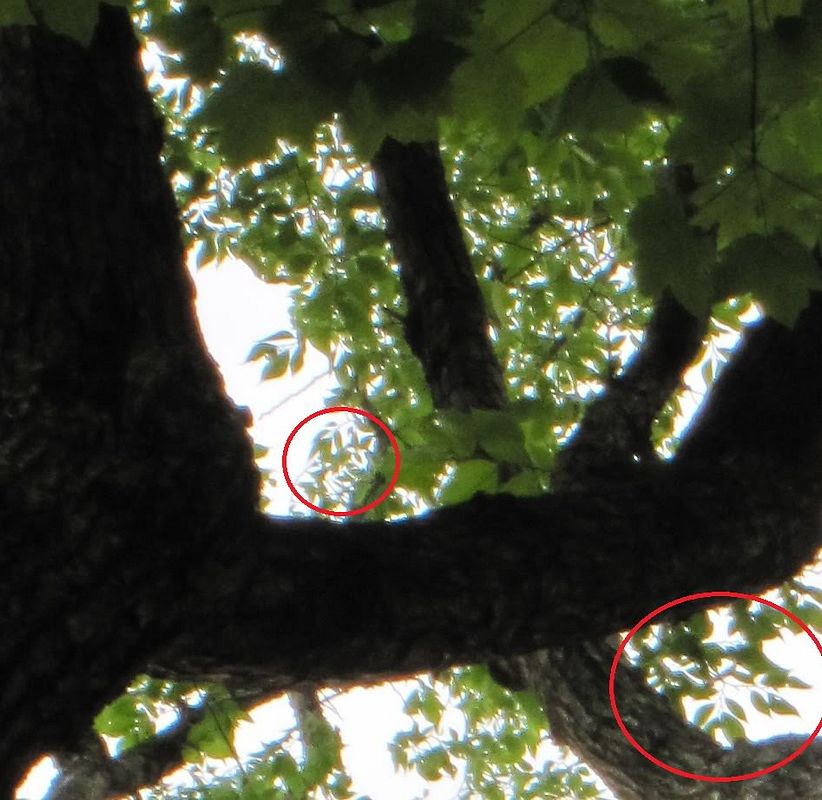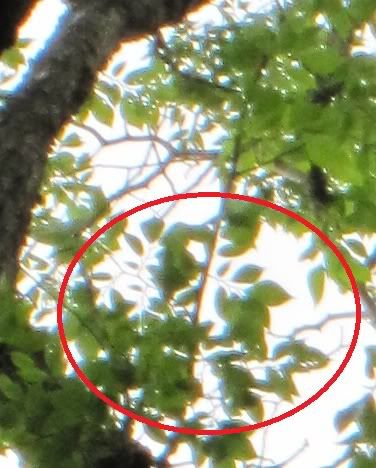I just went back, for this area (Templeton) and such I have seen maybe 10 Elms roadside that have been treated and well managed. As for this one has never been touched it is grown in by maples and exactly half its roots are in semi wet land which is maybe how it survived untouched. But what strikes me is with all the disease that spreads by railroad, how this thing survived being 55 feet from the track center-line. It is 6.5 feet DBH and has got to be diseased but possibly savable if I find out who's land and if I can clear the touching crowding trees to allow more canopy sunlight, and get the fungicide. It is a single trunk and classic shape, no need to go to waste given the constant balanced natural water supply it could possibly outlive many; treated.
Pink, this one needs a good bit of thought, contemplation, and specific learning before you take any action.
A couple questions though....
Do you mean 6.5' circumference, or diameter? It looks far smaller than 6.5' DBH.
How is it that you think the railroad is spreading Ophiostoma ulmi spores?
(side note).....when did they change the name of the DED fungus from ceratosystis to ophiostoma?
A few things to consider before you act....
Treating an infected tree with fungicide will not save the tree. To stop dutch elm (which I'm not sure your tree has), you must remove infected tissue, and go back as much as 10' from the last visible symptom. The brown streaking the fungus causes will continue the infection if any is left. So you've gotta trace the infection, and remove all infected material (sterilizing your tools in the process).
Removing smaller elms in the area could potentially allow the large tree to be infected through root grafts working at this time of year. May/June is the worst time to be cutting on living elms.
You're gonna freak when you find out the cost of the fungicide to properly treat a big elm.
It's easy to do more harm than good here, imo....Take it slow, learn, question, learn more.....then act.
